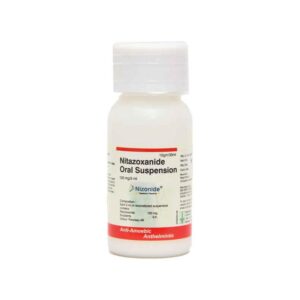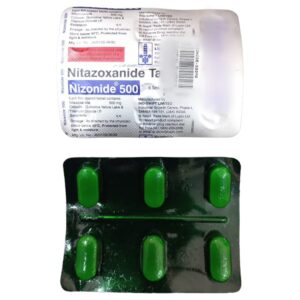NITAZOXANIDE
NITAZOXANIDE: Nitazoxanide is an antiparasitic drug used to treat various gastrointestinal infections caused by protozoa and helminths.
Mechanism of action:
Nitazoxanide works by interfering with the energy production and metabolism of the parasites, thereby inhibiting their replication and growth. It has broad-spectrum activity against several protozoa including Giardia lamblia, Cryptosporidium parvum, and Entamoeba histolytica.
Use:
1. Cryptosporidiosis: Nitazoxanide is specifically approved for the treatment of diarrhea caused by Cryptosporidium parvum in immunocompetent individuals.
2. Giardiasis: Nitazoxanide is used to treat giardiasis caused by Giardia lamblia.
3. Other gastrointestinal infections: It may also be prescribed for the treatment of other infections caused by protozoa like Entamoeba histolytica, Blastocystis hominis, and Cyclospora cayetanensis.
Dose:
The recommended dose of nitazoxanide varies depending on the condition being treated and the age of the patient. It is available in tablet and suspension forms. Here are some typical dosing regimens:
– Cryptosporidiosis in adults and children ≥12 years: 500 mg every 12 hours for 3 days.
– Giardiasis in adults and children ≥12 years: 500 mg once daily for 3 days.
– Giardiasis in children 4-11 years: 200 mg every 12 hours for 3 days.
– Other gastrointestinal infections: The dosage may vary, so it is important to follow the instructions provided by the healthcare provider.
Side effects:
Common side effects of nitazoxanide include abdominal pain, nausea, vomiting, headache, and diarrhea. These side effects are usually mild and temporary. Serious side effects are rare, but if any occur, it is important to seek medical attention immediately. It is also worth noting that nitazoxanide may interact with other medications, so it is crucial to inform the healthcare provider about all the medications being taken.



